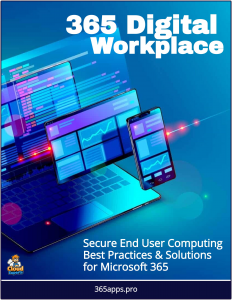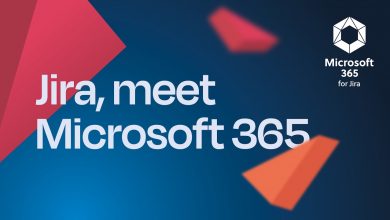Cloud PCs for Windows 365
The benefits of adopting a Cloud PC model are numerous, offering advantages for both end users and IT teams.
 A Cloud PC, as exemplified by solutions like Windows 365, is a virtualized desktop environment hosted in the cloud and delivered to end users over the internet.
A Cloud PC, as exemplified by solutions like Windows 365, is a virtualized desktop environment hosted in the cloud and delivered to end users over the internet.
It provides a full Windows desktop experience—complete with applications, data, and personalized settings—accessible from virtually any device.
The benefits of adopting a Cloud PC model are numerous, offering advantages for both end users and IT teams.
1. Device Flexibility and Accessibility
- Work from Anywhere: A Cloud PC can be accessed from any internet-connected device—laptops, tablets, smartphones, or even thin clients—running Windows, macOS, iOS, Android, or via a web browser. This eliminates dependency on specific hardware, enabling true mobility.
- Consistency Across Devices: Users experience the same desktop environment, applications, and files regardless of the device they’re using, ensuring seamless transitions between work locations or devices.
2. Simplified IT Management
- Reduced Hardware Overhead: Since the desktop runs in the cloud, there’s no need to maintain high-performance local machines or manage frequent hardware upgrades. IT teams can offload compute and storage demands to the cloud provider (e.g., Microsoft Azure for Windows 365).
- Centralized Control: Provisioning, updates, and maintenance are managed through a cloud portal, reducing the need for on-site intervention or manual imaging of physical PCs.
- Scalability: IT can quickly scale resources up or down—adding more Cloud PCs or adjusting CPU, RAM, and storage—based on organizational needs, without the delays of procuring physical hardware.
3. Enhanced Security
- Data Stays in the Cloud: Sensitive data resides in the cloud rather than on local devices, reducing the risk of data loss from stolen or compromised endpoints. This is especially valuable for remote work or BYOD (Bring Your Own Device) scenarios.
- Built-In Security Features: Cloud PCs integrate with enterprise-grade security tools like Azure Active Directory (AAD), Microsoft Defender, and encryption protocols, ensuring robust protection against threats.
- Remote Wipe Capability: If a device is lost or an employee leaves, IT can remotely revoke access or wipe the Cloud PC instance, safeguarding corporate assets.
4. Cost Efficiency
- Subscription-Based Model: Cloud PCs typically operate on a per-user, per-month pricing structure (e.g., Windows 365), eliminating large upfront capital expenditures on hardware and infrastructure.
- Predictable Budgeting: Organizations can forecast costs more accurately, paying only for the resources they use, with the flexibility to adjust as workforce needs change.
- Reduced Maintenance Costs: With patching, updates, and infrastructure management handled by the cloud provider, IT teams spend less time and money on routine upkeep.
5. Improved Productivity
- Instant Onboarding: New employees or contractors can be provisioned a fully configured Cloud PC in minutes, complete with necessary applications and access rights, accelerating time-to-productivity.
- Performance Optimization: Cloud PCs can be tailored to specific workloads—lightweight setups for basic tasks or high-performance configurations for resource-intensive applications like design or data analysis—ensuring users have the tools they need without local hardware limitations.
- Seamless Continuity: If a local device fails, users can switch to another device and resume work instantly, minimizing downtime.
6. Support for Hybrid Workforces
- Hybrid Work Enablement: As hybrid work becomes the norm, Cloud PCs provide a unified solution for employees splitting time between office, home, or travel, maintaining a consistent experience across environments.
- BYOD Support: Employees can use personal devices securely without compromising corporate data, as the Cloud PC operates independently of the local machine.
7. Sustainability Benefits
- Lower Energy Consumption: By reducing reliance on power-hungry local desktops and extending the lifespan of existing devices (e.g., using lightweight endpoints to access Cloud PCs), organizations can shrink their carbon footprint.
- Hardware Longevity: Older devices that might not support modern OS requirements locally can still serve as access points to a Cloud PC, delaying the need for replacements.
8. Business Continuity and Disaster Recovery
- Resilience: Cloud PCs are hosted in highly redundant, geographically distributed data centers, ensuring availability even during local outages or natural disasters.
- Backup and Recovery: Data and configurations are stored in the cloud, simplifying restoration after disruptions compared to traditional PCs reliant on local backups.
Real-World Example
Imagine a small business with 50 employees. Instead of purchasing and maintaining 50 high-end PCs, the company subscribes to Windows 365 Cloud PCs. Sales staff use lightweight configurations on tablets for client meetings, while developers access powerful virtual desktops for coding—all managed centrally.
If a device is lost, IT revokes access instantly, and the employee logs in from a new device without missing a beat. The business saves on hardware costs, boosts security, and scales effortlessly as it grows.
Conclusion
The Cloud PC model delivers a transformative approach to end-user computing, blending flexibility, security, and efficiency. By abstracting the desktop from physical hardware, it empowers organizations to adapt to modern work demands while simplifying IT operations.
Whether you’re a small startup seeking agility or an enterprise aiming to secure a distributed workforce, the benefits of Cloud PCs—exemplified by solutions like Windows 365—make them a compelling choice for the future of work.



